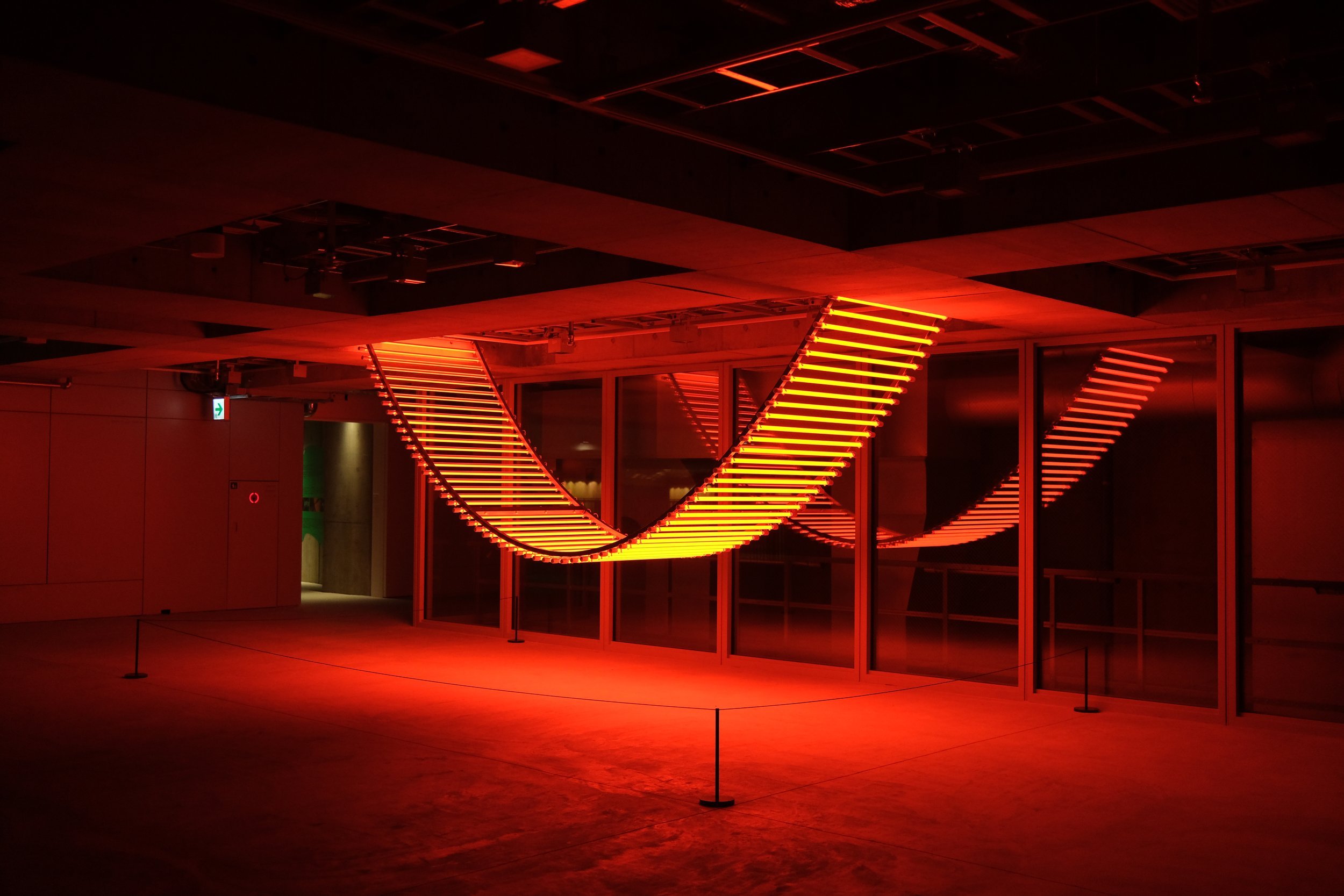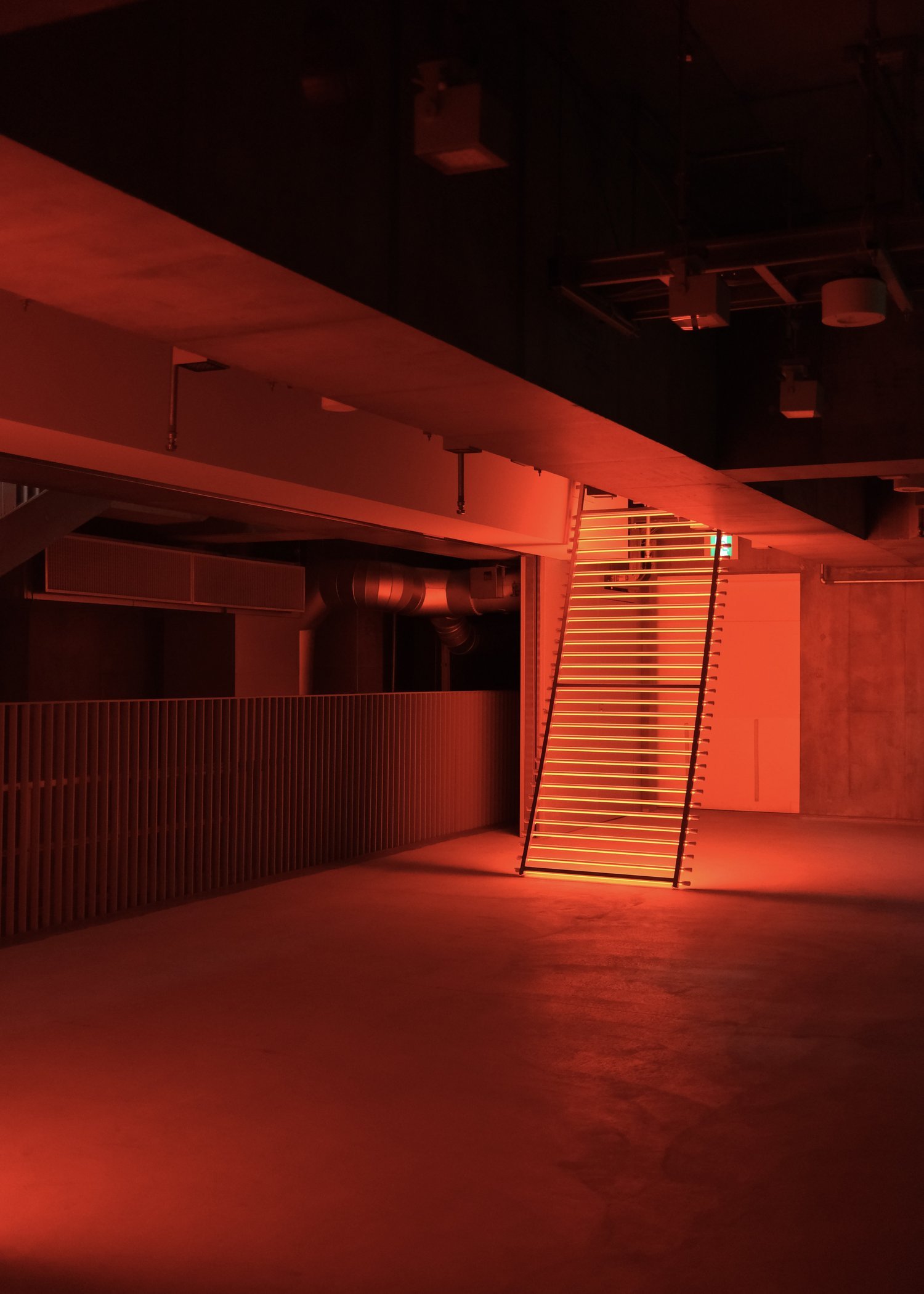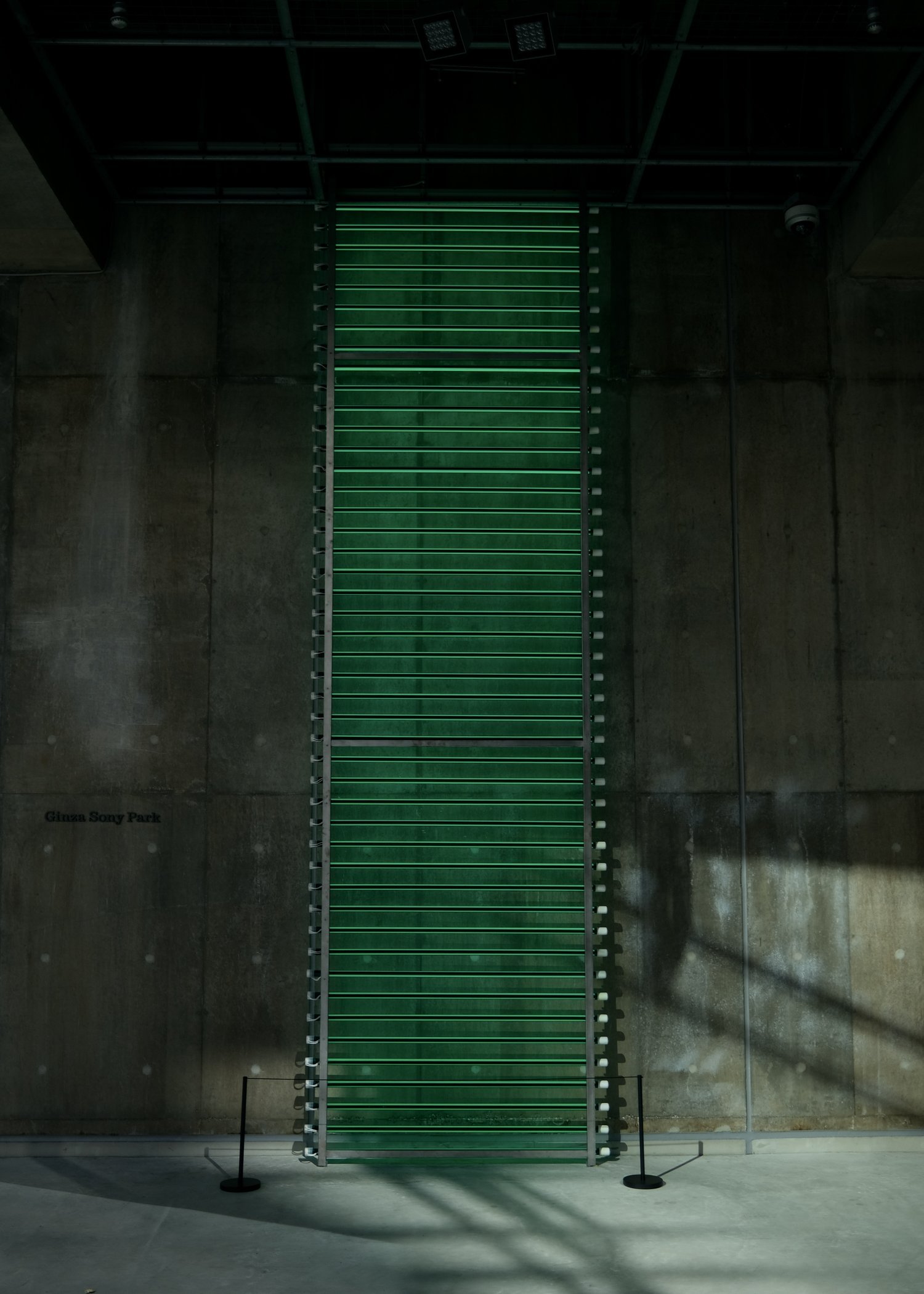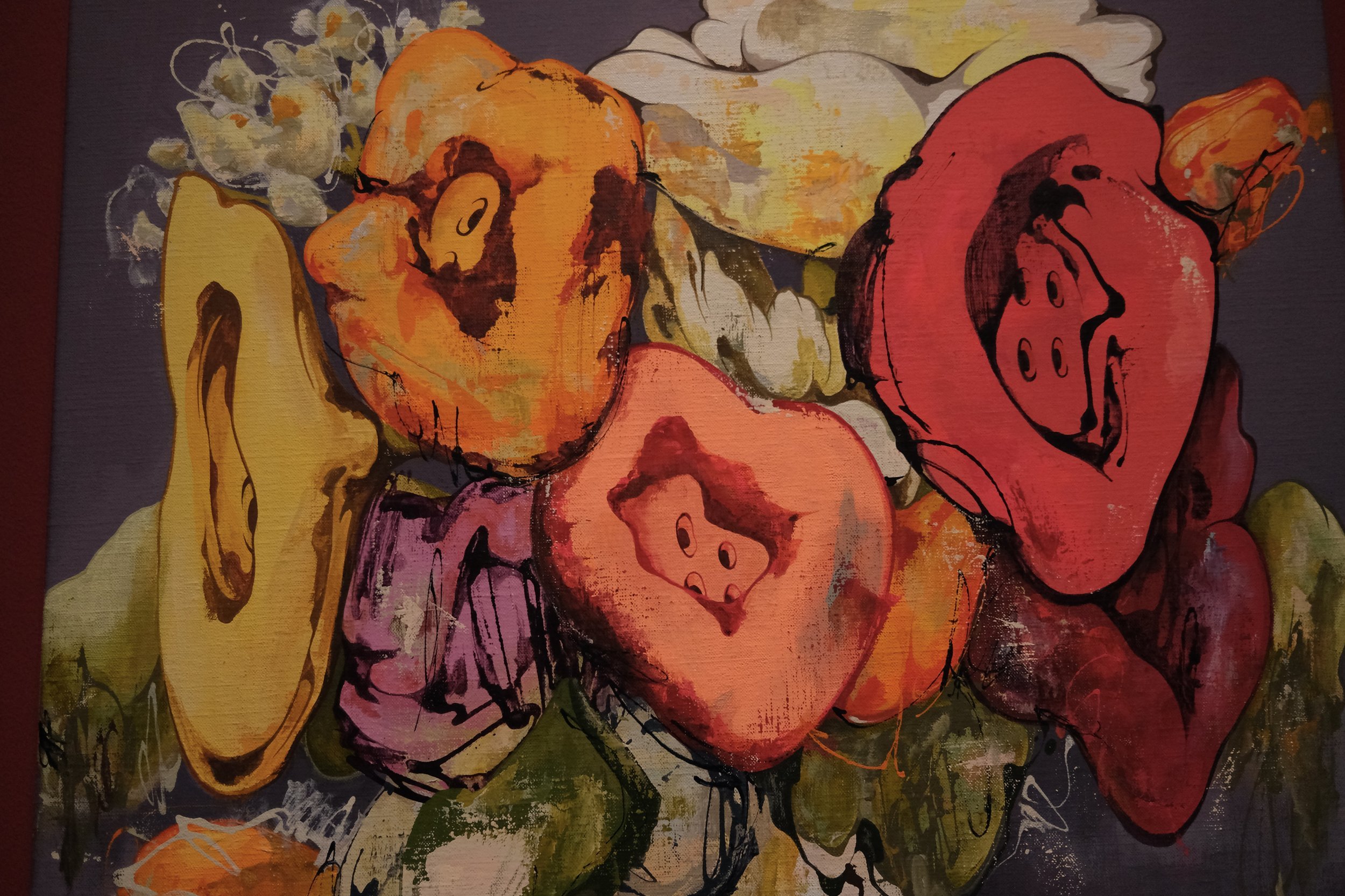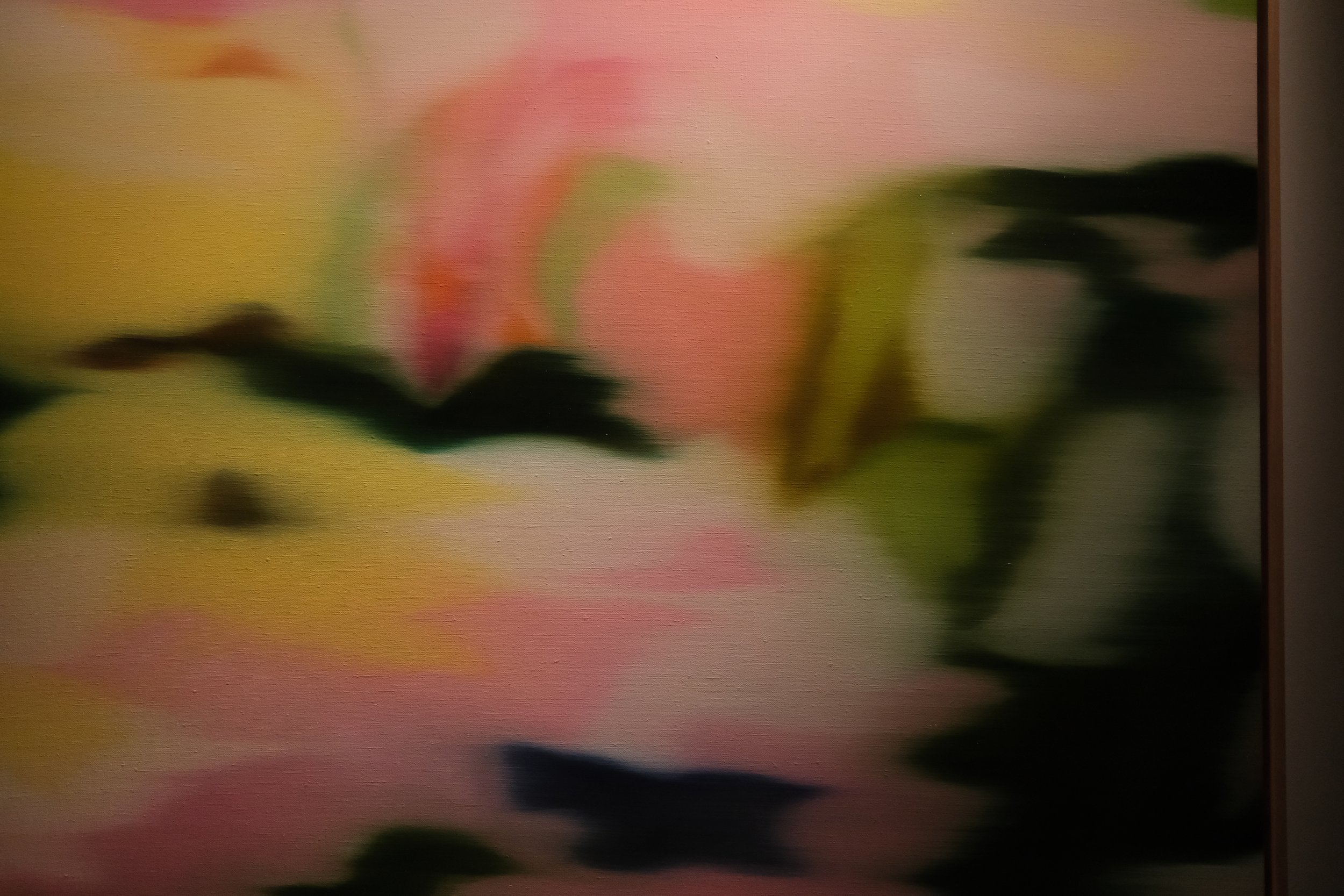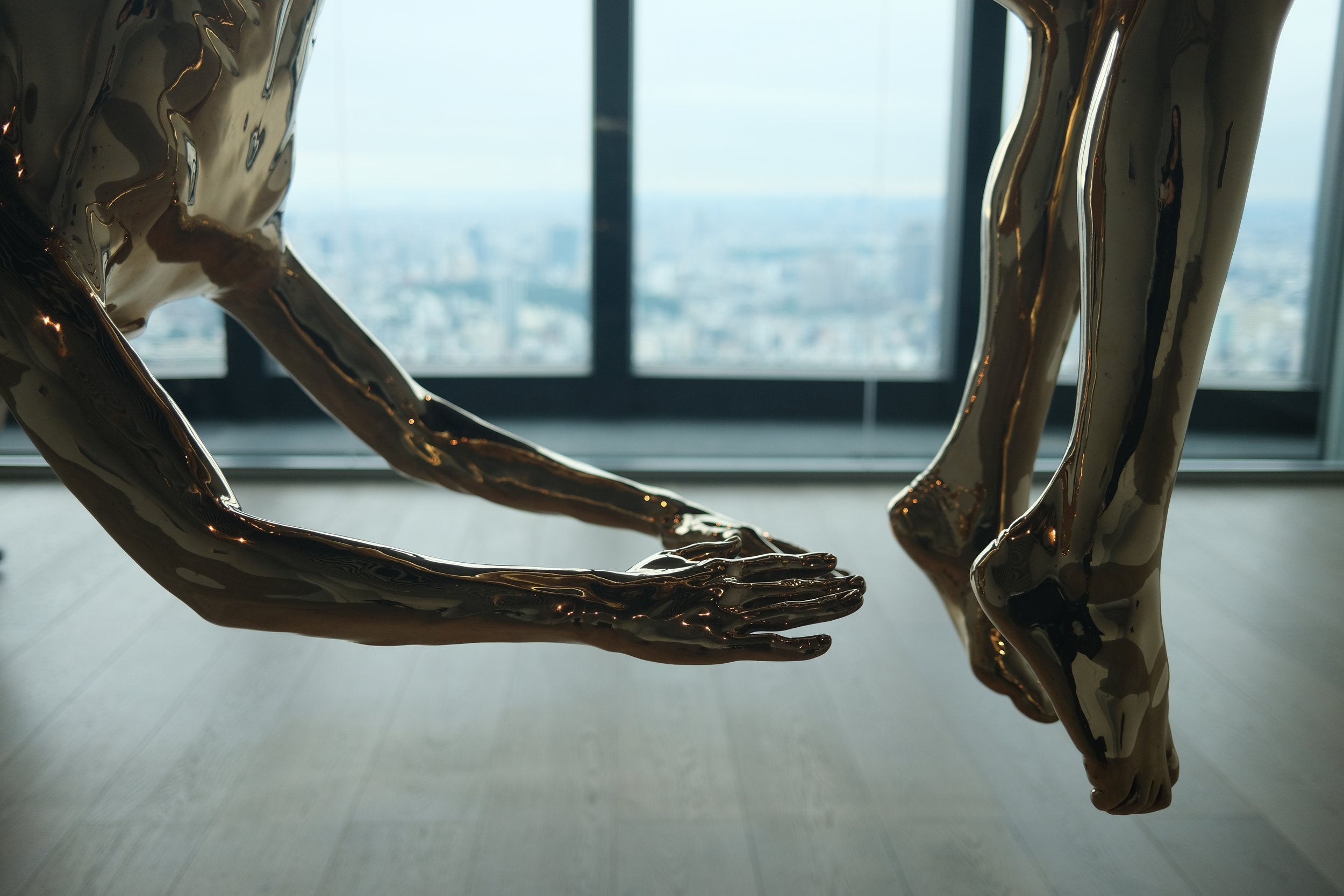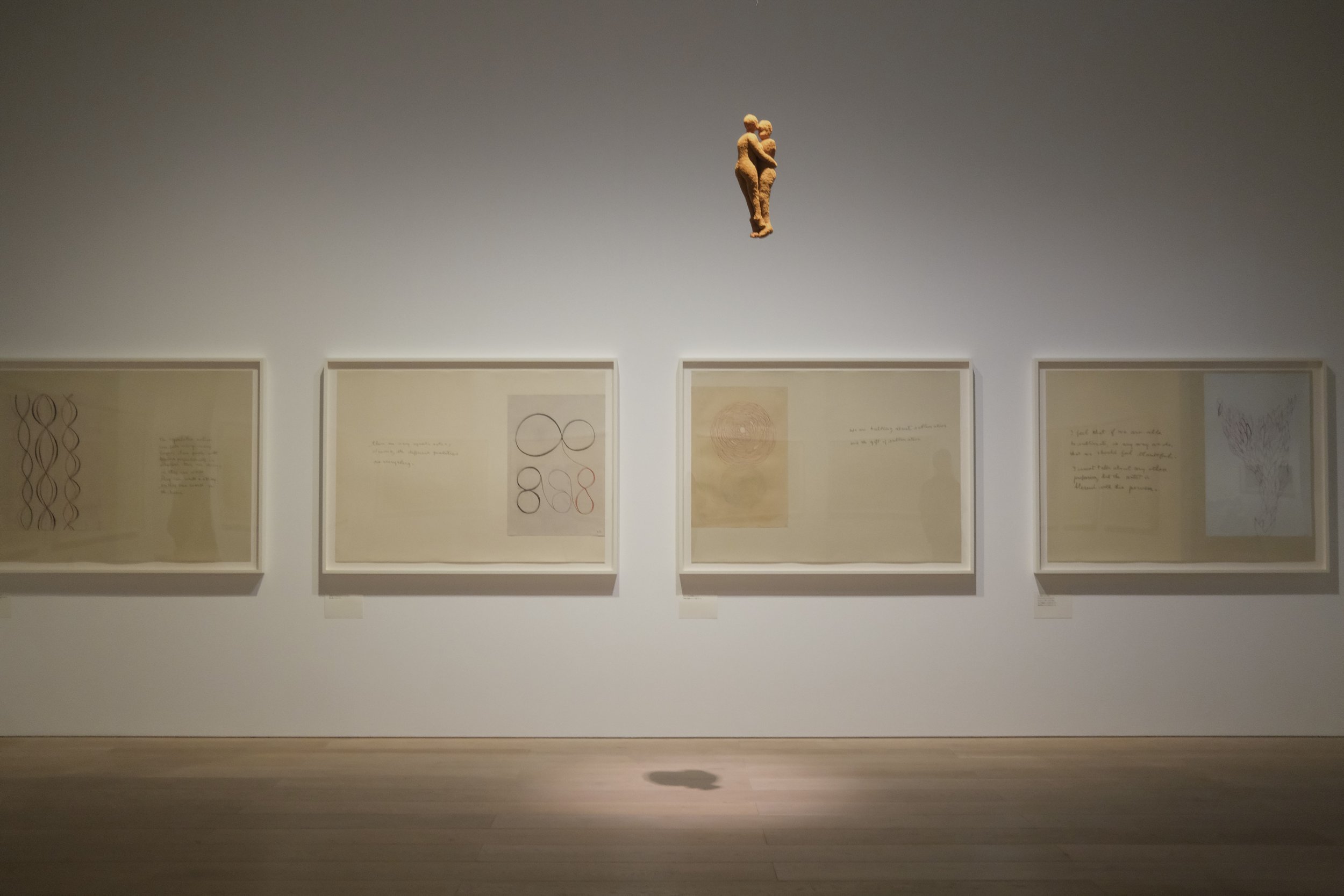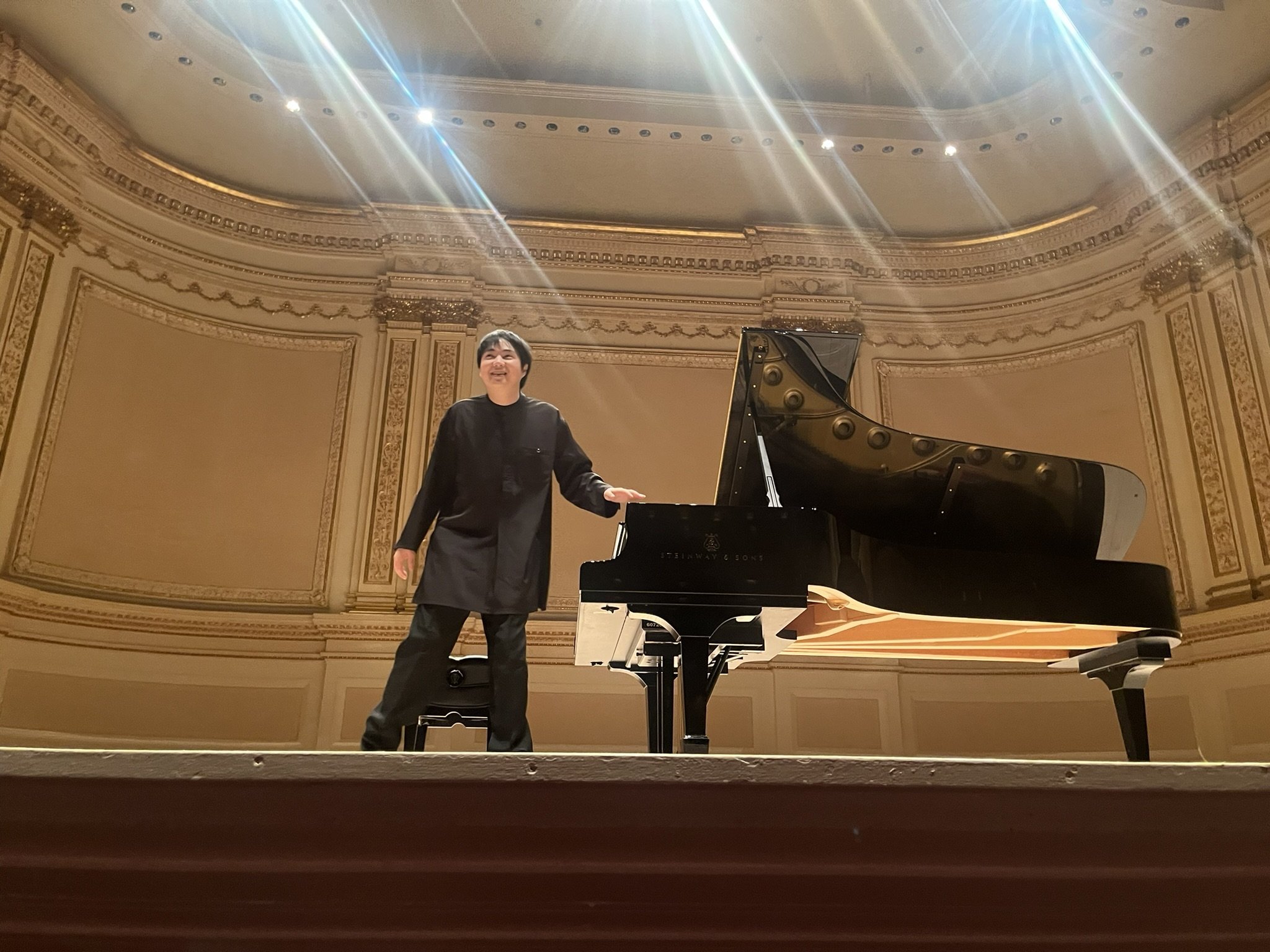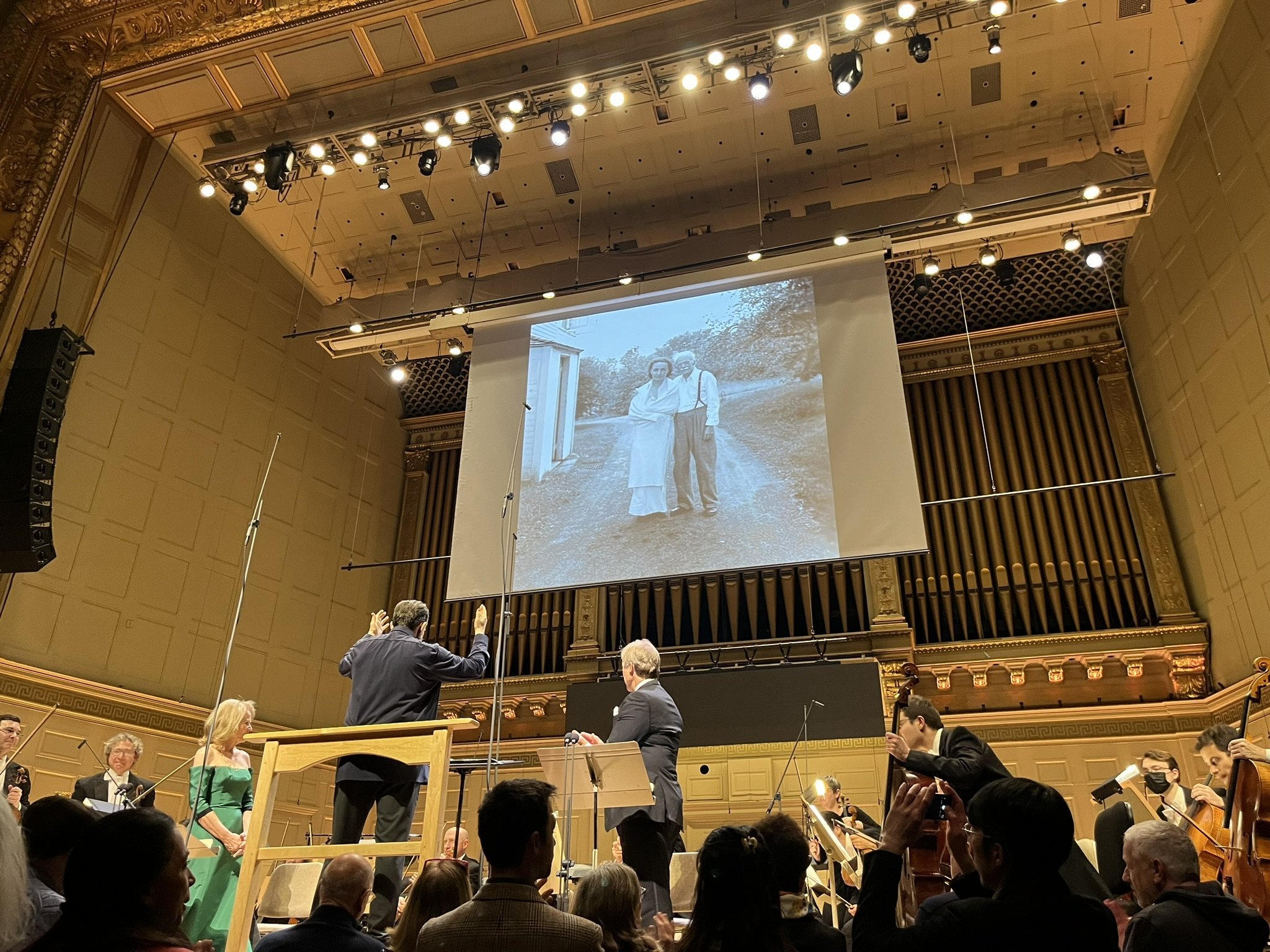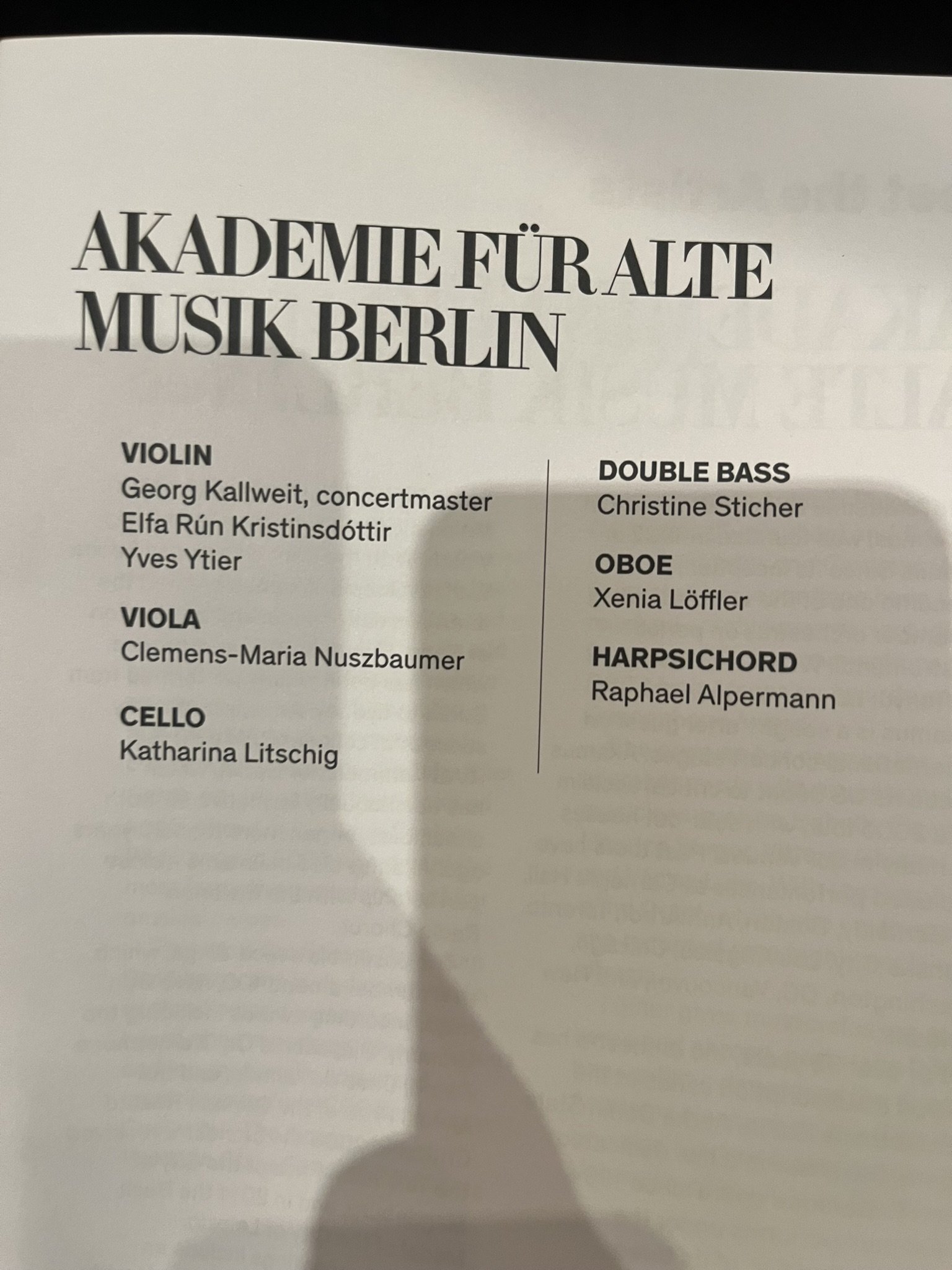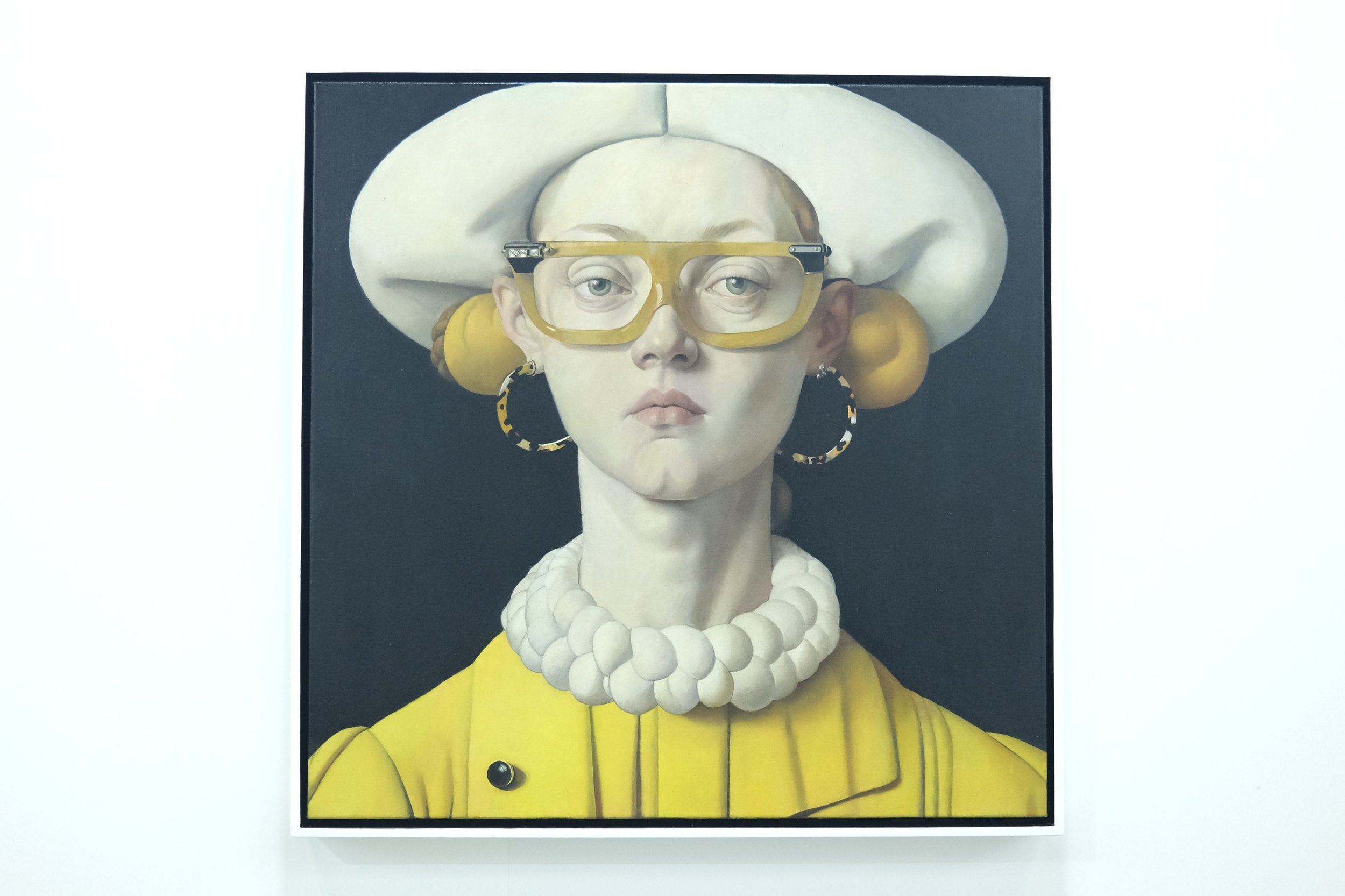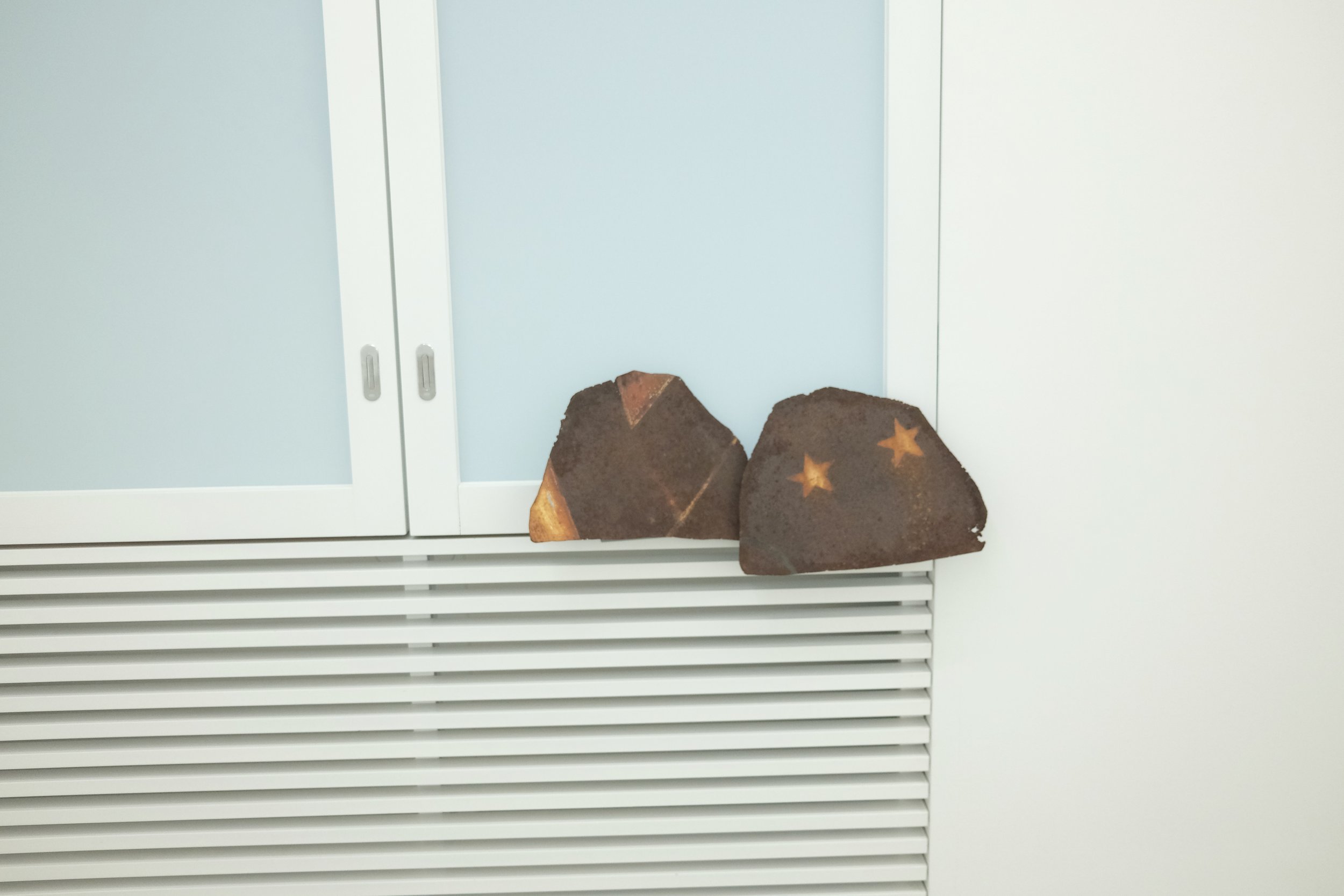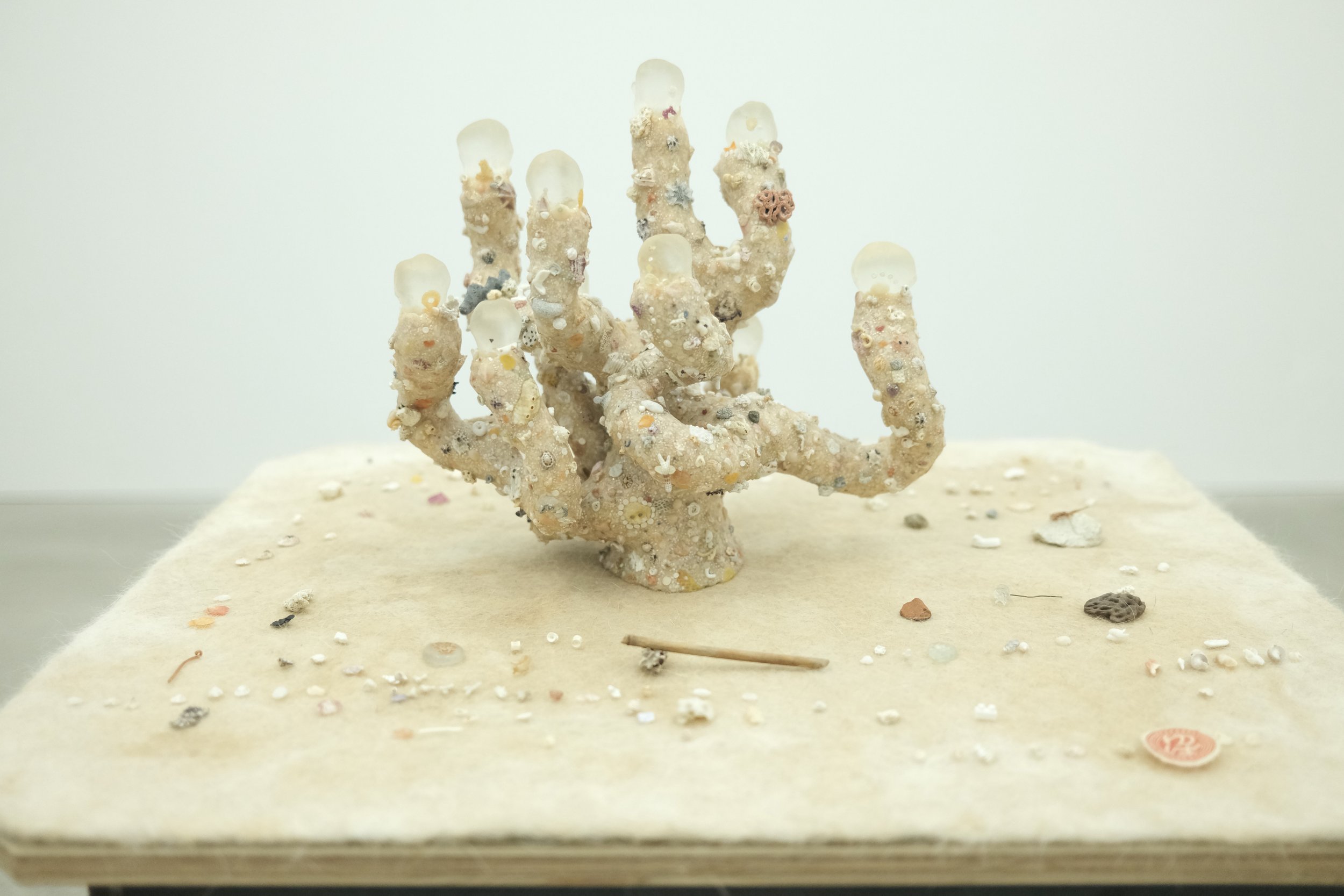a falcon, perched
on the freeway lights
405 Los Angeles
this morning, here
So near, hear?
stream of cars
determined silence.
Why not hunt in the prairie? I ask
Why not over the hill,
concrete, macchina
here I hunt, Charlie replies
here I nest.
pigeons,
zip.
distracted I look up, look back
stand
close
listen to the air, water, fire.
I enter, into the sky
Which direction is your curiosity going?…knowing what to focus on. curation, to create your library.
Call It Love
Aristotle's guide to the good life | Nicomachean Ethics , action with aim.
to read in French one day.
ART IN THE PARK (Under Construction) - lieee
2024.11.19 - 12.1
5-3-1, Ginza, Chuo-ku, Tokyo (Google Maps)
till next time.
Charles A. Balse
Words of Wisdom
Science and technology laid claim to the image as a mechanism for visual registration, with the result that it was scientists at this juncture in history who oversaw the birth of new imaging techniques. Where Jan van Eyck (if Vasari is to be believed) had experimented with alchemy and distillation' to improve the binding and drying of oil paint, the key inventions in the nineteenth century were mechanical and chemical applications developed in the laboratory. Visual images were still the indispensable key to intellectual development they had been in the mind of Leonardo, but now it was no longer necessarily the artist who would shape those images. The academic artists of the eighteenth and nineteenth centuries had been swayed by the ancient idea of ut pictura poesis, becoming caught up in the notion that visual art is fundamentally linguistic and narrative in character and hence, like language, can and must be encoded in clear grammar. Painting (and to a lesser extent sculpture), which still held out the promise in the Renaissance of becoming a vital link in the epistemological chain, was now reduced to the same status as literature - not even poetry - with the emphasis on the narrative component. History painting, in other words.
It ought not to be a surprise, therefore, that it was poets and novelists such as Charles Baudelaire (1821-67) and Émile Zola (1840-1902) who became fervent champions of the visual arts from the mid-nineteenth century, as we saw in a previous chapter. They stressed the role of imagination and emotion in the artistic interpretation of the world - something that was too important for mechanical photography, which was still in its infancy at the time. In a famous passage from 'Le moment artistique' (L'Événement, 1866), Zola argued, in what would become an important dictum for the twentieth century, that what art can add to reality is humanity.
A NEW HISTORY OF WESTERN ART
PHOTOGRAPHY: THE ULTIMATE MARRIAGE OF ART AND SCIENCE
Chapter 3 ART(S) AND SCIENCE 253
The marriage of art and ideology became a recurring phenomenon in the course of the twentieth century. Few of the many successive and overlapping 'isms' were entirely free of political, ideological or philosophical underpinnings. The democratisation of art and visual language enabled artists to develop revolutionary or reactionary reflexes, become politically or religiously engaged or, at the very least, pick a side in national and international conflicts. There are countless examples of politically engaged works of art in the twentieth and twenty-first centuries. They seldom attained the status of Manet's Execution of Emperor Maximilian or Picasso's Guernica, but the reciprocal influence between art and politics and/or religion remains a constant factor to this day. Ai Wei and Banksy are the most recent examples of artists who systematically address political issues, but countless others have gone before them in recent decades.
If we view the political and religious component of art from a long historical perspective- as we have sought to do in this chapter - it is notable that today's artists rarely allow themselvesto be used by the political powers-that-be. On the contrary, they almost systematically embody public opposition, the gnawing conscience of the nation, especially in the Western democracies. More than that, the work of artists who dance to the tune of autocratic regimes is simply not perceived as art in democratic countries. This creates fascinating paradoxes, such as the majestic, classicising statues of exotic dictators that are reviled as kitsch in Europe, even though similar statues from antiquity were seen as authoritative there until well into the twentieth century. Sculpted tributes, like the statues dedicated to the guardians of the demos in Athens twenty-five centuries ago, are still carved from blocks of marble, only now the busts are those of presidents and prime ministers. You will not find them in surveys of important artworks, except perhaps as negative examples. This conundrum illustrates how we citizens of the twenty-first century struggle with our own visual past and how certain genres and types of art have been contaminated by twenty-five centuries of political history. Above all, however, it shows how art has been transformed from a weapon of the powerful into one that is now also wielded by the people.
Chapter 4 ART, POWER, AND FAITH
A NEW HISTORY OF WESTERN ART - Pg 346-348
At the time, given that I had no idea then of the influence that family would have on my life, this mention should have passed me idly by. But it gave me a sharp stab of pain, the pain felt by a self that had long since mostly ceased to exist but which could still mourn the absence of Gilberte. For a conversation about the family of the "chief undersecretary at the Postmaster General's," which Gilberte and her father had once had in my presence, had gone completely from my mind. Memories of love are, in fact, no exception to the general laws of remembering, which are themselves subject to the more general laws of habit. Habit weakens all things; but the things that are best at reminding us of a person are those which, because they were insignificant, we have forgotten, and which have therefore lost none of their power. Which is why the greater part of our memory exists outside us, in a dampish breeze, in the musty air of a bedroom or the smell of autumn's first fires, things through which we can retrieve any part of us that the reasoning mind, having no use for it, disdained, the last vestige of the past, the best of it, the part which, after all our tears seem to have dried, can make us weep again. Outside us? Inside us, more like, but stored away from our mind's eye, in that abeyance of memory which may last forever. It is only because we have forgotten that we can now and then return to the person we once were, envisage things as that person did, be hurt again, because we are not ourselves anymore, but someone else, who once loved something that we no longer care about. The broad daylight of habitual memory gradually fades our images of the past, wears them away until nothing is left of them and the past becomes irrecoverable. Or, rather, it would be irrecoverable, were it not that a few words (such as "chief undersecretary at the Postmaster General's") had been carefully put away and forgotten, much as a copy of a book is deposited in the Bibliothèque Nationale against the day when it may become unobtainable.
Page 222, Book 2 of In Search of Lost Time, Marcel Proust, Translation by James Grieve
Main Studies
CYNTHIA DAIGNAULT The Lemon, LA
Sara Berman – Lapdogs and Fools, LA
Mika Kato: Evanescent, Yet Powerful, Elaborate Expressions and Changes, Starting Afresh by “Forgetting Art as One Knew it.” - Tokyo
東京現代・Tokyo Gendai - Tokyo
Lake Natron, birding - Tanzania
“Monte di Pietà” project: PAWNSHIP A PROJECT BY CHRISTOPH BÜCHEL - Venezia
Louise Bourgeois - Tokyo
ART IN THE PARK (Under Construction) - Tokyo
APPENDIX:
Toro y Moi - Walking In The Rain (Official Video)
BXKS - Back It Up (Prod. Lamsi)
BXKS - Microphone Sex (Live) | +44 | Amazon Music
The Artist Profile Archive: Njideka Akunyili Crosby
BXKS - Packed In! (Official Video)
Fort Romeau & Gold Panda - Stay Here (Studio Barnhus)
Fort Romeau & Gold Panda - Writer (Studio Barnhus)
Oklou - harvest sky ft. underscores (Official Visualizer)
Irakli - Attention Nr. 5 [SEMANTICA190]
Sara Landry, Nico Moreno - Because They Want Our Seat (Official Visualiser)
Korine - Elegance & You (Official Music Video)
Oklou - choke enough (Official Visualizer)
In The Years Ahead Steve Bicknell
Oxy - Misplaced (Official Audio)
Fort Romeau & Gold Panda - Stay Here (Studio Barnhus)
How the In-Between Shapes Your Reality
Science is shattering our intuitions about consciousness | Annaka Harris
Nilüfer Yanya - 'Call It Love (Jam City Remix)' (Official Audio)
There's Nothing Left To Do But Let Go - The Genius Of Rick Rubin
Learning Photography With Sebastião Salgado.
The Comeback of Manganese Blue PB33
In the Library with Hannah O’Neill — CHANEL and Literature
In the Library with Angèle — CHANEL and Literature
HOW TO CURATE YOUR LIBRARY (and pretty much your life)
ClassicAsobi recommends
This section features content recommended from the NYC based ClassicAsobi and his team, specializing in classical music.
Met brings Strauss back / 影のない女@メット
Met brings Strauss back / 影のない女@メット
December 1, 2024
Met brings Strauss back to New York
Metropolitan Opera 11.29.2024
RICHARD STRAUSS
CONDUCTOR
Yannick Nézet-Séguin @nezetseguin
NURSE
Nina Stemme
SPIRIT MESSENGER
Ryan Speedo Green @speedogreen
EMPEROR
Russell Thomas @travlingtenor
EMPRESS
Elza van den Heever @elzasoprano
DYER'S WIFE
Lise Lindstrom @liselindstromsoprano
BARAK, THE DYER
Michael Volle @michaelvolleofficial
@metopera @metorchestra @maroon.ak
12.11.2024
New York Philharmonic 12.11.2024
Handel’s Messiah
Ton Koopman, Conductor
Maya Kherani, Soprano
Maarten Engeltjes, Countertenor
Kieran White, Tenor
Klaus Mertens, Bass-Baritone
Musica Sacra
Asmik Grigorian, Soprano
Lukas Geniušas, Piano
At Carnegie Hall 12.12.2024
Program
TCHAIKOVSKY "Amid the din of the ball," Op. 38, No. 3
TCHAIKOVSKY "Again, as Before, Alone," Op. 73, No. 6
TCHAIKOVSKY "None but the Lonely Heart," Op. 6, No. 6
TCHAIKOVSKY "A tear trembles"
TCHAIKOVSKY Romance in F Minor, Op. 5
TCHAIKOVSKY Scherzo humoristique, Op. 19, No. 2
TCHAIKOVSKY "I bless you, forests," Op. 47, No. 5
TCHAIKOVSKY "Do not Ask," Op. 57, No. 3
RACHMANINOFF "In the silence of the secret night," Op. 4, No. 3
RACHMANINOFF "Oh, Do Not Sing to Me, Fair Maiden"
RACHMANINOFF "Child, thou art as beautiful as a flower," Op. 8, No. 2
RACHMANINOFF "The Dream," Op. 8, No. 5
RACHMANINOFF "Spring Waters," Op. 14, No. 11
RACHMANINOFF "Oh, do not grieve!" Op. 14, No. 8
RACHMANINOFF "I wait for thee," Op. 14, No. 1
RACHMANINOFF Prelude in G-sharp Minor, Op. 32, No. 12
RACHMANINOFF Prelude in D-flat Major, Op. 32, No. 13
RACHMANINOFF "Twilight," Op. 21, No. 3
RACHMANINOFF "How fair this spot," Op. 21, No. 7
RACHMANINOFF "Let Us Rest," Op. 26, No. 3
RACHMANINOFF "Dissonance," Op. 34, No. 13
COMING UP
September 14–December 14, 2024
THE UNBOXING PROJECT
an iterative curatorial project by Hyunjoo Byeon and Minjin Chae
November 2 - December 21, 2024
Various Small Fires (VSF), Los Angeles
Umar Rashid
The Kingdom of the Two Californias. La Época del Totalitarismo Part 2.
Sabine Moritz
Frost
November 8–December 21, 2024
GAGOSIAN, Beverly Hills
Walead Beshty
Profit & Loss
November 7 – December 21, 2024
REGEN PROJECTS, Los Angeles
Liang Fu / Chantal Khoury / Daniel Pitín / Nadia Waheed
November 9 – December 21, 2024
Allison Schulnik: Dumb Phone
Isabella Cuglievan: A ripple and a nest
Devin Troy Strother: Scenes for Josephine
November 16 - December 21, 2024
Thom Mayne
Shaping Accident
18 Sep 2024 - 4 Jan 2025
LA LOUVER, Los Angeles
Julia Yerger
When Lottery
November 09 - January 04
Chateau Shatto, Los Angeles
Hiroshi Sugimoto: Form is Emptiness, Emptiness is Form
15 November 2024 – 11 January 2025
Gustav Metzger
13 September 2024 – 12 January 2025
Hause & Wirth, Downtown Los Angeles
Post Human
September 12, 2024–January 18, 2025
Sara Berman
Lapdogs and Fools
November 23, 2024 — January 18, 2025
Bernard Frize
Christian Boltanski
16 November 2024 - 18 January 2025
Merian Goodman Gallery, Los Aneles
FORM AND FEELING
Curated by Ashton Cooper
NOVEMBER 2, 2024 - JANUARY 18, 2025
NIGHT GALLERY, Los Angeles
CYNTHIA DAIGNAULT
The Lemon
October 26, 2024 - January 18, 2025
Loie Hollowell
Overview Effect
Nov 9, 2024 – Jan 18, 2025
PACE, Los Angeles
William Eggleston: The Last Dyes
November 16, 2024—February 1, 2025
Views of Planet City - Visions of the Future
SCI-Arc (Southern California Institute of Architecture)
Breath(e): Toward Climate and Social Justice
HAMMER, LA
Atmosphere of Sound: Sonic Art in Times of Climate Disruption
September 14, 2025 - May 31, 2025
UCLA Art|Sci Center presented at CAP UCLA
PST ART: Art & Science Collide
A landmark regional event that explores the intersections of art and science, both past and present
Olafur Eliasson: OPEN
The Geffen Contemporary at MOCA, LA
Martin Creed: Work No. 3868 Half the air in a given space
OCMA
July 3, 2024 – February 16, 2025
May 26, 2024 – January 20, 2025
Iván ARGOTE Impermanent
November 16, 2024 -January 25, 2025
PERROTIN, Los Angeles
Firelei Báez
Gustav Metzger
And Then Came the Environment
13 September 2024 – 5 January 2025
Hauser & Wirth, Downtown Los Angeles
Frieze Los Angeles
20 – 23 February 2025
Santa Monica Airport
Raqib Shaw: Ballads of East and West
Nov. 16, 2024–March 3, 2025
Huntington Library, Pasadena, California
Alta / a Human Atlas of a City of Angels
January 13, 2025- Apr 27, 2025
Library Foundation of Los Angeles and Los Angeles Public Library
630 West 5th Street, Los Angeles
Olafur Eliasson: OPEN
On view Sept 15, 2024 – July 6, 2025
The Geffen Contemporary at MOCA
June 22 - July 20, 2024
TOMIO KOYAMA GALLERY ROPPONGI, Tokyo

















